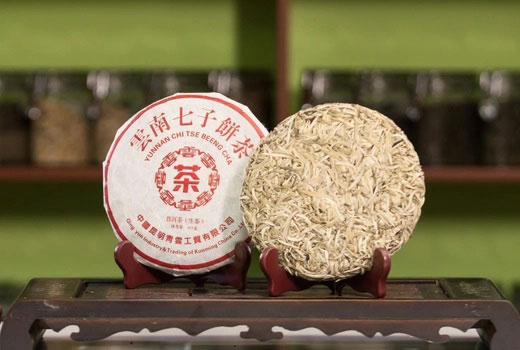White tea appearance
During harvesting, special attention is paid to leaf selection. Usually for white tea, only the youngest semi-decayed leaves of the first harvest are collected, half-covered with short white hairs of an open tea kidney (& laquo; buy xoa & raquo; & mdash; & laquo; white cilia & raquo;). For elite white teas, either only one apical leaf (more precisely, tipsa) is collected; or tipsa plus another leaf following it.
The production & shy; of the vast majority of white tea varieties consists of only two steps:
- First step & mdash; short-term exposure to steam (a kind of & laquo; calcination & raquo; about 1 minute to stop the fermentation process; although some varieties of white tea sometimes even ferment a little or drip on smoke),
- Second step & ndash; drying.
The finished tea should not contain wilted, broken, twisted and oxidized (black or brown) leaves. As such, the color of the leaves should remain the same (green or grayish green).
The white color of the bottom of the leaves should be clearly visible.
Making white tea correctly
White tea is brewed necessarily with soft and not too soft & shy; raw water (85 & deg; C). Because it has a special concentration of essential oils that give it an exquisite aroma, brewing with too hot water will kill these wonderful smells.
Brewing time, usually no more than 5 minutes.
For example, tea of the variety & laquo; Silver Needle & raquo; brewed at a water temperature of 85 & deg; From about 4 minutes. After brewing, white tea has a pale yellow or greenish-yellow color, and a thin floral, slightly & laquo; herbal & raquo; aroma and sweet taste. In China, white tea is used almost exclusively for the traditional brewing procedure & mdash; gunfu-cha.
Varieties of manufacture
Two of the most popular types of white tea in China & mdash; White Peony (Chinese names Pai-Mu-Tang or Bai-Mudan) and Silver Needle variety (Bai-Hao Yinzhen).
White Peony (Pai-Mu-Tan or Bai-Mudan) |
White Peony (Pai-Mu-Tang or Bai-Mudan) is produced in Fujian Province (East China). White Peony, except for buds, consists of young leaves, which makes it not as exquisite as Silver Needles. However, the taste and aroma of White Peony is much stronger and clearer, which makes it more understandable for people who are not familiar with white tea. |
Silver Needle (Bai-Hao Yinzhen) |
Grade & laquo; Silver Needle & raquo; grown in northern Fujian, and presumably this variety was already known in the 12th century. Silver Needles & ndash; it is considered the best variety of white tea, which consists of buds and unopened young leaves resembling spear tips. Such tea has a clean, fresh aroma and a sweet taste. The raw materials for Silver Needles are harvested early in the morning until the leaves have blossomed, just a few days a year. |
Top white tea producers
White tea is almost exclusively distributed in China and is considered one of the most refined (and expensive!) Teas.
It should also be added that white tea is poorly stored and transported, because due to the lack of fermentation, it is very demanding on storage conditions.
Of all other types of teas, it is white tea that is considered the most healing .
